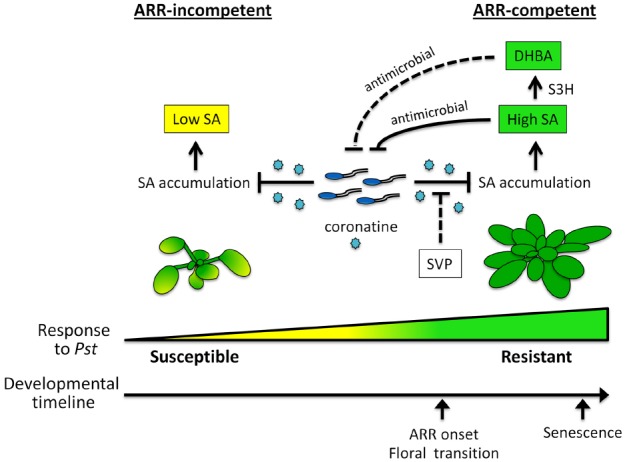FIGURE 2.

Salicylic acid-mediated disease resistance in young and mature Arabidopsis. The model illustrates key aspects of the Arabidopsis age-related resistance (ARR) response to Pseudomonas syringae pv. tomato (Pst) with a focus on salicylic acid (SA) accumulation in young and mature plants. In young plants, coronatine produced by Pst suppresses the accumulation of SA to dampen defense, resulting in susceptibility to disease. At later stages of development, plants acquire ARR competence and become resistant to Pst. Mature plants infected with virulent Pst accumulate high levels of SA despite the presence of coronatine. Our accumulated evidence supports the idea that intercellular SA acts as an antimicrobial agent to limit Pst growth. The onset of ARR competence coincides with the transition to flowering whereas leaf senescence occurs well after. We hypothesize that the floral repressor SHORT VEGETATIVE PHASE (SVP) contributes to ARR by alleviating coronatine-mediated suppression of SA. SA-3-HYDROXYLASE (S3H) converts SA to 2,3-dihydroxybenzoic acid (DHBA), which accumulates with age and contributes to leaf senescence. We hypothesize that DHBA contributes to ARR as an antimicrobial agent in the intercellular space. Dashed bar—hypothesized relationship, solid bar—relationship supported by evidence.
